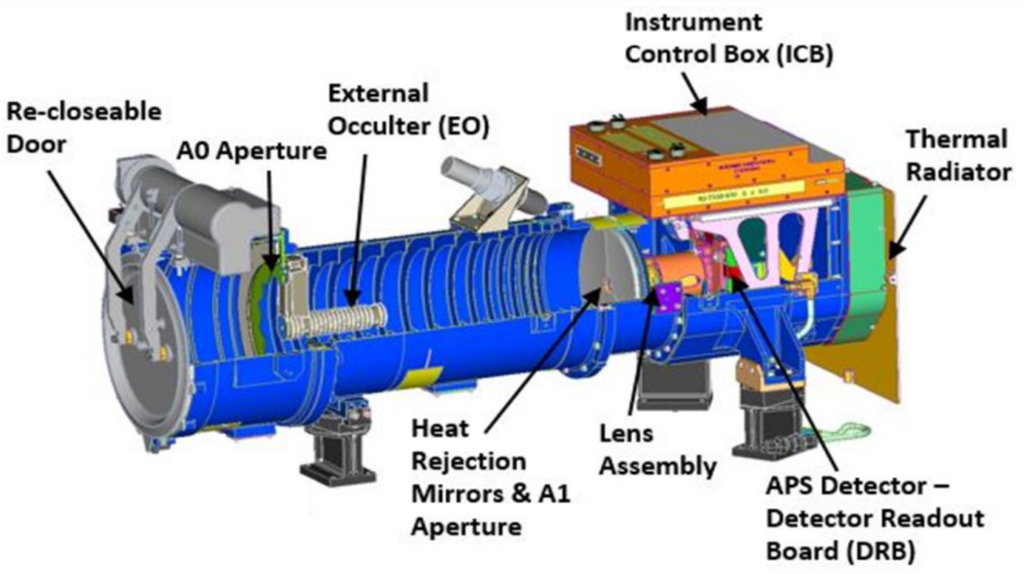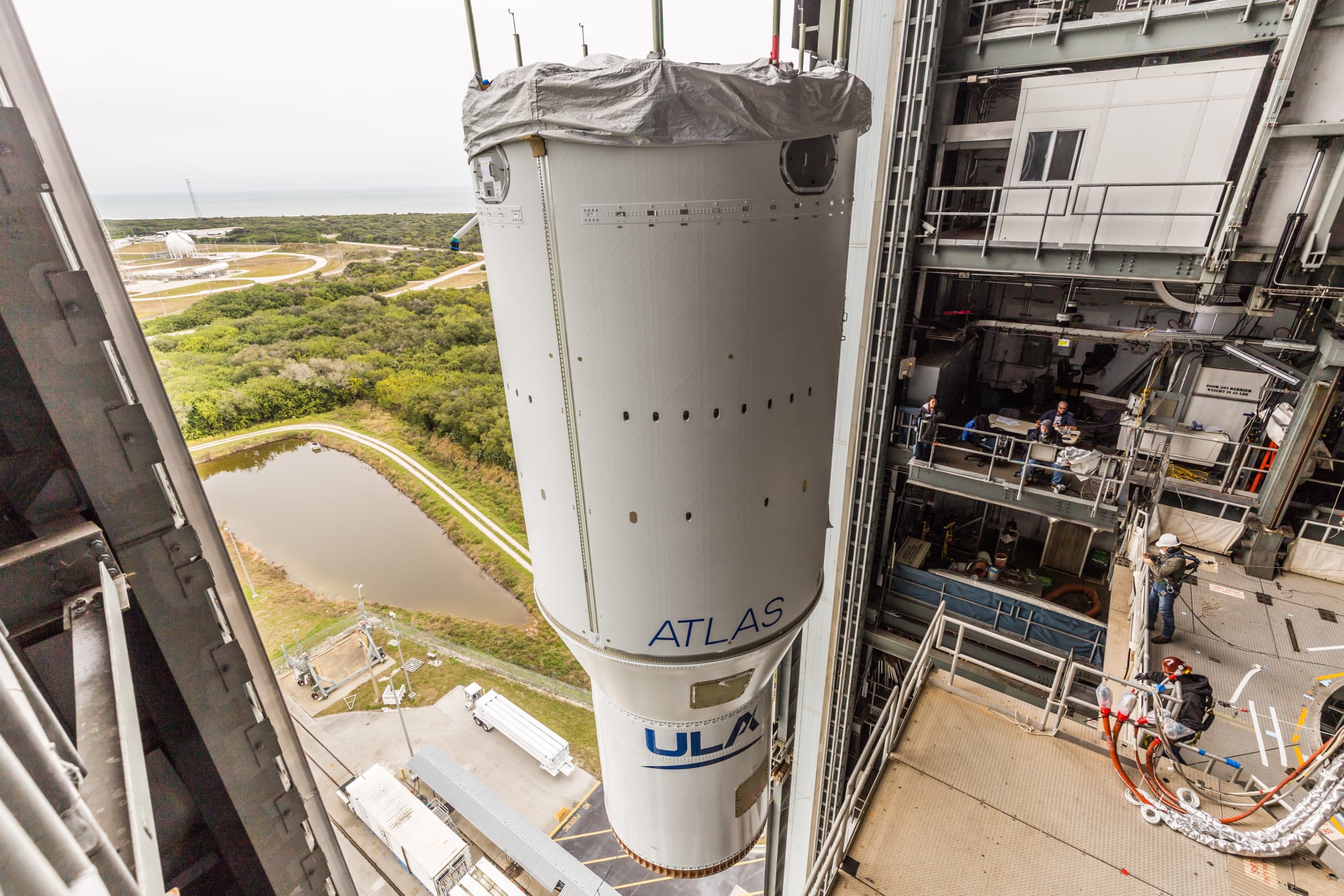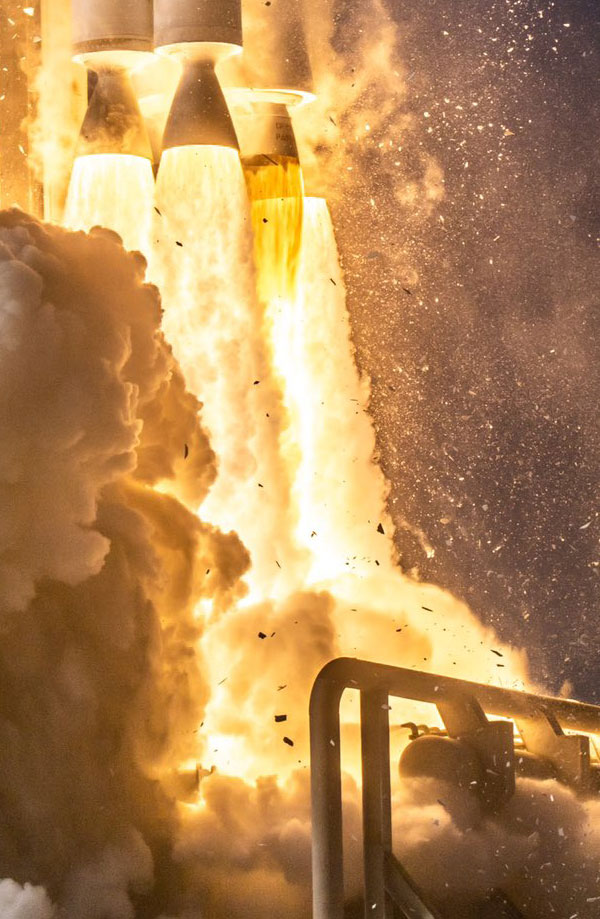![]()
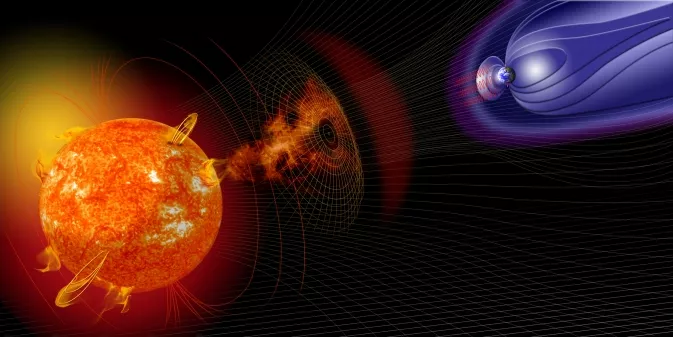
Monitoring Coronal Mass Ejections
Updated July 7, 2024
Our Sun, a colossal ball of plasma, is a dynamic entity, constantly emitting flares, eruptions, and streams of charged particles. Among these phenomena are Coronal Mass Ejections (CMEs), massive expulsions of solar material that can travel millions of miles per hour and pose significant risks to Earth’s infrastructure and technology. To monitor these solar storms and assess their potential impact, scientists rely on a network of specialized instruments, including the newly developed Compact Coronagraph (CCOR-1).
The CCOR-1 is a cutting-edge instrument designed to reside on the Sun-Pointing Platform (SPP) of the Geostationary Operational Environmental Satellite (GOES)-U. The GOES-U satellite, the final in the GOES-R Series, launched in April 2024 and will provide a comprehensive suite of Earth observations, including weather monitoring, oceanography, and space weather surveillance.
CCOR-1, funded by the National Oceanic and Atmospheric Administration (NOAA) and managed by the National Aeronautics and Space Administration (NASA), will play a pivotal role in alerting our planet about solar storms. By capturing high-resolution images of the Sun’s coronal white-light, CCOR-1 will enable scientists to determine the size, velocity, and density of CMEs with unprecedented precision.
This detailed information will be crucial for assessing the potential impact of these solar storms on Earth’s power grids, communication networks, and satellite systems. Additionally, it will aid in the development of more accurate space weather forecasts, allowing for timely mitigation strategies and risk reduction measures.
The CCOR-1 instrument has successfully completed its Integration and Testing (I&T) phase and has been delivered to the GOES-U satellite vendor. It is now mechanically integrated with the spacecraft, ready for the final stages of testing and preparation for launch. With the deployment of CCOR-1, we will gain a new level of understanding and preparedness for the Sun’s dynamic activity, ensuring the protection of our planet and its inhabitants.
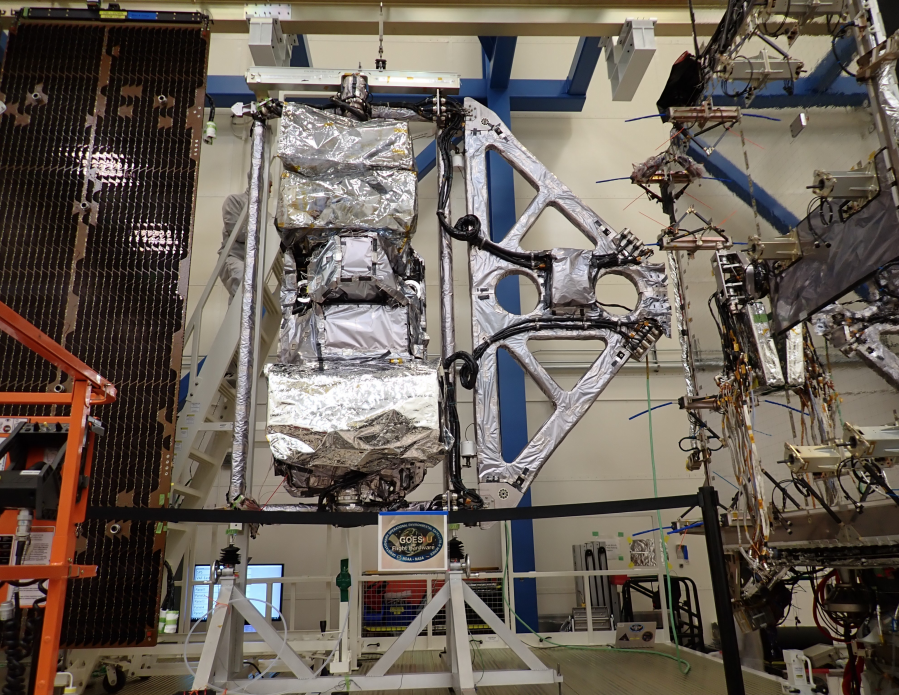
the top going down the instruments include: EXIS, CCOR, CCOR PSB, SUVI SEB, and SUVI STS.
Image courtesy Lockheed Martin
Ground System Overview
The CCOR Ground System is a software system that provides the necessary infrastructure for operating the CCOR instrument. It is hosted on the existing GOES-R Ground System, which provides a robust and scalable platform for managing and processing CCOR data.
Key Functionalities
- Command and Control: The Ground System handles the formatting of instrument commands, including memory management, and receives and processes CCOR raw telemetry data. It also receives and checks CCOR science data packets.
- Mission Planning and Scheduling: The Ground System integrates CCOR-related tasks into the GOES-U schedule, ensuring that the instrument is operated efficiently and effectively.
- Data Operations: The Ground System distributes Level 0 (L0) data to the NOAA Level Zero Storage Service in the Cloud (LZSSc) for retrospective users. It also distributes L0 data and housekeeping data to the SWPC for the near real-time generation of Level 1b and Level 2+ products.
Here are some of the key benefits of CCOR:
- Improved CME imagery: CCOR will provide higher-resolution imagery of the Sun’s corona than LASCO, which will allow scientists to better understand the structure and evolution of CMEs.
- Faster CME detection: CCOR will provide imagery of the Sun’s corona within 30 minutes of acquisition, which is significantly faster than LASCO. This will give scientists more time to issue warnings and take action to protect critical infrastructure from the effects of CMEs.
- Greater CME coverage: CCOR will provide continuous coverage of the Sun’s corona, whereas LASCO can only provide imagery of the Sun’s corona when SOHO is facing the Earth. This will allow scientists to track CMEs that are directed towards the Earth and assess their potential impact.

